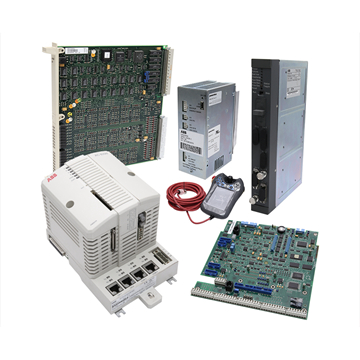Unlocking the Power: Discover the Hidden Benefits of Low Voltage VFDs in Industry!
In the fast-paced world of modern industry, efficiency and precision are paramount. One technology that has emerged as a vital component in achieving these goals is the low voltage Variable Frequency Drive (VFD). These devices play a crucial role in controlling the speed and torque of electric motors, thus optimizing their performance while minimizing energy consumption. As industries face mounting pressure to reduce operational costs and environmental impact, the significance of low voltage VFDs has never been greater. This article will delve into the workings, applications, and numerous benefits of low voltage VFDs, showcasing how they can transform industrial processes and contribute to a more sustainable future.

Understanding Low Voltage VFDs
Low voltage VFDs are electronic devices that allow for the precise control of electric motor speeds by varying the frequency and voltage supplied to the motor. They consist of several key components, including a rectifier, DC bus, inverter, and control circuitry. The rectifier converts incoming AC power to DC, which is then filtered and stored in the DC bus before being converted back to AC by the inverter at the desired frequency. This process enables the adjustment of motor speed and torque to match the specific demands of different applications. In contrast to high voltage VFDs, which are used in applications requiring higher power levels, low voltage VFDs typically operate at voltage levels below 600 volts, making them suitable for a wide range of industrial applications, from small pumps to large conveyor systems. Understanding these fundamental components and their functions is essential for any industry looking to leverage the power of VFD technology.
Applications of Low Voltage VFDs in Industry
Low voltage VFDs find applications across various sectors due to their versatility and efficiency. In manufacturing, for instance, they are integral to the operation of conveyor systems. By controlling the speed of conveyor belts, manufacturers can enhance productivity and reduce energy costs. Similarly, in HVAC systems, low voltage VFDs regulate the speed of fans and compressors, ensuring optimal temperature control while minimizing energy consumption. In the water treatment industry, these drives adjust the flow rates of pumps, providing precise control over water distribution and treatment processes. A personal anecdote comes to mind from a friend who works in a water treatment facility. He shared how the installation of low voltage VFDs allowed them to optimize their energy usage significantly, resulting in a noticeable decrease in their monthly utility bills. From food processing to mining, the versatility of low voltage VFDs continues to expand, demonstrating their importance in modern industrial applications.
Benefits of Low Voltage VFDs
The advantages of incorporating low voltage VFDs into industrial operations are numerous. One of the most significant benefits is energy savings; by allowing motors to run at variable speeds, VFDs can significantly reduce energy consumption. This is particularly beneficial in applications where motors often run at full speed, even when full power is not required. Enhanced control over motor speeds translates to reduced wear and tear on equipment, leading to longer lifespans and less frequent maintenance. Additionally, VFDs improve process efficiency by enabling smoother operation and reducing mechanical stress on machinery. This not only enhances productivity but also minimizes downtime due to equipment failure. Furthermore, the return on investment (ROI) for low voltage VFDs can be substantial, as the energy savings and extended equipment life often offset the initial costs within a relatively short period. The combination of these benefits makes low voltage VFDs a strategic choice for industries aiming to enhance their operational efficiency.
Challenges and Considerations
Despite their advantages, implementing low voltage VFDs does come with challenges that industries need to consider. Compatibility with existing systems can often pose a hurdle during installation, especially in older facilities. Initial investment costs can also be a concern, as organizations must weigh the upfront expenditure against potential long-term savings. Additionally, proper maintenance is essential to ensure the longevity and efficiency of VFDs, requiring staff training and possibly the hiring of specialized technicians. However, these challenges can be addressed with careful planning and a proactive approach. For instance, conducting thorough compatibility assessments before installation can mitigate issues down the line. Businesses can also explore financing options or phased implementations to ease the financial burden. With the right strategies in place, industries can effectively integrate low voltage VFDs into their operations, reaping the benefits without significant disruption.
Embracing Low Voltage VFD Technology for Industrial Growth
In conclusion, low voltage VFDs represent a pivotal technology in the pursuit of enhanced industrial efficiency and sustainability. Their ability to provide precise control over motor operations not only leads to significant energy savings but also improves process efficiency and equipment longevity. As industries continue to navigate the challenges of modern manufacturing, the adoption of low voltage VFD technology stands out as a forward-thinking solution. By considering the benefits and addressing the potential challenges associated with their implementation, businesses can position themselves for future growth and success in an increasingly competitive landscape. The time to embrace the power of low voltage VFDs is now, as they hold the key to unlocking a more efficient and sustainable industrial future.






Comentarios